Uncover the architectural wonders of Wicker Park on this captivating walking tour. Explore a treasure trove of 19th-century workers’ cottages, marvel at the ornate details of historic landmarks like the Nickerson House, and gain insights into Chicago’s diverse building styles. From Romanesque Revival to Queen Anne, this small-group excursion delves into the rich history of the neighborhood, showcasing the evolution of the city’s architectural landscape. Whether you’re a seasoned urban explorer or simply curious about the past, this tour promises to reveal the hidden gems that have shaped Wicker Park’s enduring character.
Key Points
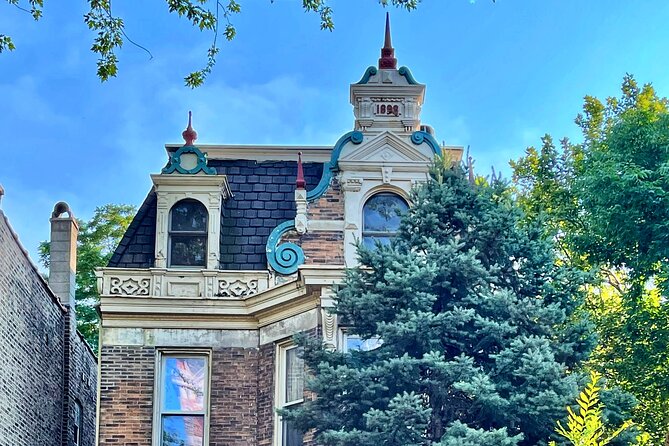
- The tour explores historic 19th-century workers’ cottages in Wicker Park, showcasing their modest size, compact floor plans, and simple ornamentation.
- Participants will admire architectural landmarks like the historic Chicago & North Western Railway freight house and the Romanesque Revival Grover Cleveland Elementary School.
- The tour provides insights into Chicago’s diverse architectural history, from ornate Romanesque Revival to elegant Queen Anne styles.
- The 2-hour walking tour covers the Wicker Park neighborhood and is limited to a small group of 8 travelers.
- The tour begins at 1237 N Hoyne Ave and ends at 2001 W Division St, with convenient access to the primary focus areas.
Overview of the Tour
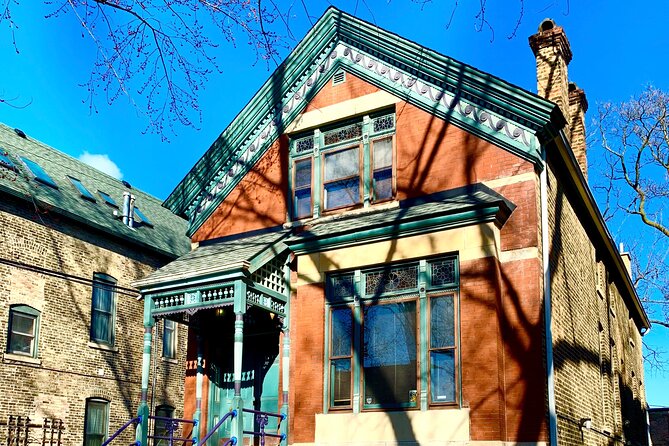
This walking tour of Wicker Park offers visitors a chance to explore the historic homes and cottages that make up this picturesque Chicago neighborhood.
Participants will discover the architectural gems and learn about the rich history of the area on this small-group excursion.
The tour lasts two hours and is limited to a maximum of 8 travelers, ensuring a personalized sightseeing experience.
Highlights include admiring 19th-century workers’ cottages, local landmarks like grand mansions and historic baths, and learning about Chicago’s architectural heritage.
Participants will receive historical photos of each stop via a free app.
While the tour isn’t wheelchair accessible, it’s suitable for travelers with moderate physical fitness.
If you're enjoying exploring Chicago on foot, you'll love these other walking tours we recommend
Exploring 19th-Century Workers’ Cottages
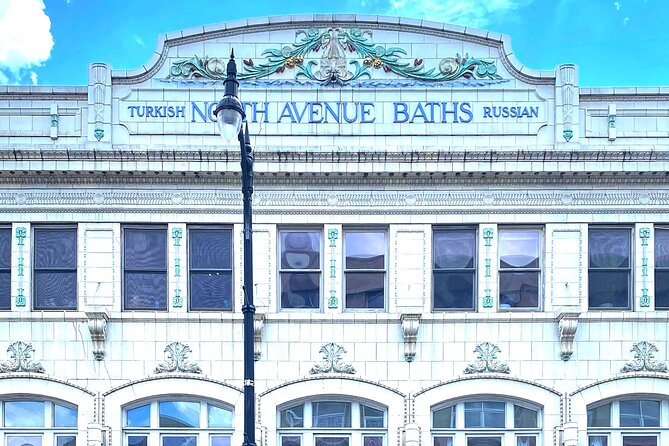
The walking tour offers visitors a chance to admire numerous well-preserved 19th-century workers’ cottages that dot the Wicker Park neighborhood. These quaint, modest homes were once occupied by laborers, tradesmen, and families who contributed to the area’s industrial growth in the late 1800s. With their charming architectural details, cozy proportions, and distinctive front porches, the cottages provide a glimpse into the lives of Chicago’s working class from a bygone era. The tour guide shares insights into the historical significance and unique features of these modest dwellings, allowing participants to better understand the neighborhood’s evolution and the daily lives of its early residents.
| Cottage Features | Historical Significance | Architectural Details |
|---|---|---|
| Modest size | Housed working-class families | Front porches |
| Compact floor plans | Supported industrial growth | Pitched roofs |
| Simple ornamentation | Reflected neighborhood’s heritage | Wooden construction |
| Front-facing orientation | Contributed to community character | Distinctive window designs |
| Limited living space | Represent Chicago’s working-class history | Compact, efficient layouts |
Admiring Local Architectural Landmarks
Along the walking tour, you will also admire several local architectural landmarks that showcase Wicker Park’s rich history and diverse building styles.
One impressive sight is the historic Chicago & North Western Railway freight house, a grand industrial structure built in the late 19th century.
Nearby, the tour will stop at the Grover Cleveland Elementary School, a striking example of Romanesque Revival architecture with its ornate façade and turrets.
Plus, the tour highlights the neighborhood’s grand mansions, such as the Nickerson House, a luxurious Queen Anne-style home that now serves as a museum.
These architectural gems provide a glimpse into Wicker Park’s past and the vibrant community that has called it home for generations.
Learning About Chicago’s Architectural History
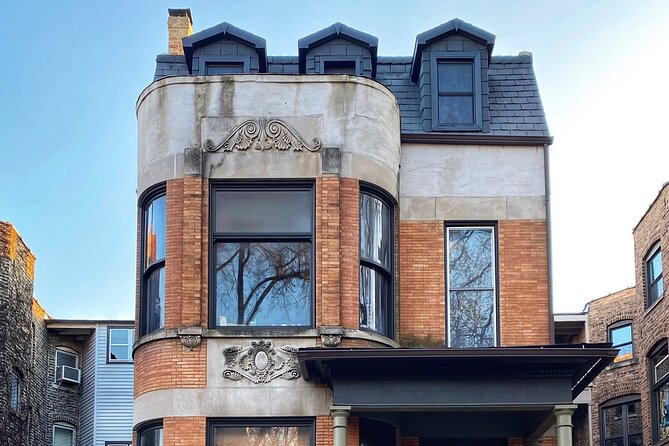
As participants explore the historic homes and cottages, they’ll also learn about the rich architectural history that has shaped Wicker Park over the decades.
Chicago’s distinctive building styles, from the ornate Romanesque Revival to the elegant Queen Anne, are on full display throughout the neighborhood.
The tour guide expertly points out the defining features of each architectural movement, from the intricate brickwork and turrets to the ornamental details and sweeping porches.
Travelers gain a deeper appreciation for how the neighborhood’s diverse array of historic structures reflects the city’s evolution over time.
Tour Details and Logistics
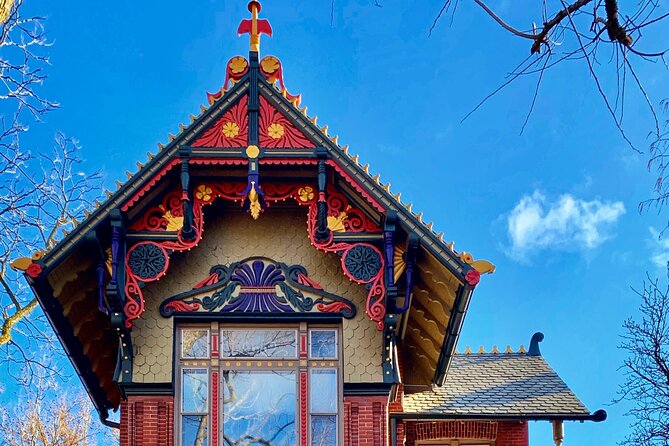
This 2-hour walking tour of Wicker Park’s historic homes and cottages takes place in a small group of up to 8 travelers.
Participants meet at 1237 N Hoyne Ave and the tour ends at 2001 W Division St, covering the picturesque neighborhood and its architectural highlights.
Along the way, guests will explore 19th-century workers’ cottages and admire local landmarks like mansions and historic baths while learning about Chicago’s architectural history.
The tour includes historical photos of each stop in a free app, though it’s important to note that the tour isn’t wheelchair accessible.
Travelers should have moderate physical fitness, and free cancellation is available up to 24 hours before the experience.
Fascinated by Chicago's past? More historical tours we've covered
Meeting and End Points
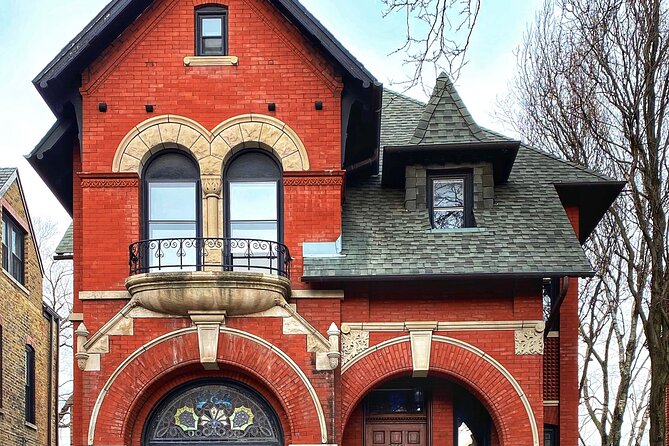
The walking tour of Wicker Park’s historic homes and cottages begins at 1237 N Hoyne Ave and concludes at 2001 W Division St, allowing participants to explore the picturesque neighborhood’s architectural highlights.
This centralized meeting point provides easy access to the tour, which covers approximately 2 miles over the course of 2 hours.
The end point at 2001 W Division St is conveniently situated near public transportation options, making it simple for visitors to continue their exploration of the area.
Key features of the meeting and end points include:
- Easily accessible by foot, public transit, or rideshare
- Close proximity to the tour’s primary focus areas
- Convenient for participants to begin and conclude the experience
Tour Highlights and Inclusions
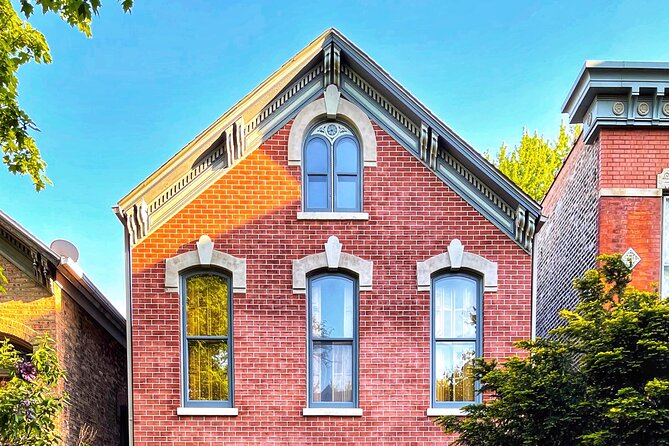
Participants on the walking tour can expect to uncover architectural gems, including 19th-century workers’ cottages and local landmarks like grand mansions and historic baths. The tour also provides historical photos of each stop through a free mobile app, offering a deeper dive into the neighborhood’s rich architectural history.
| Tour Highlights |
|---|
| Explore 19th-century workers’ cottages |
| Admire local landmarks like mansions and historic baths |
| Learn about Chicago’s architectural history |
Travelers can expect a personalized sightseeing experience, as the tour is limited to a maximum of 8 participants. The 2-hour journey through Wicker Park promises to be an informative and visually stunning exploration of the neighborhood’s historic homes and cottages.
Additional Information and Policies
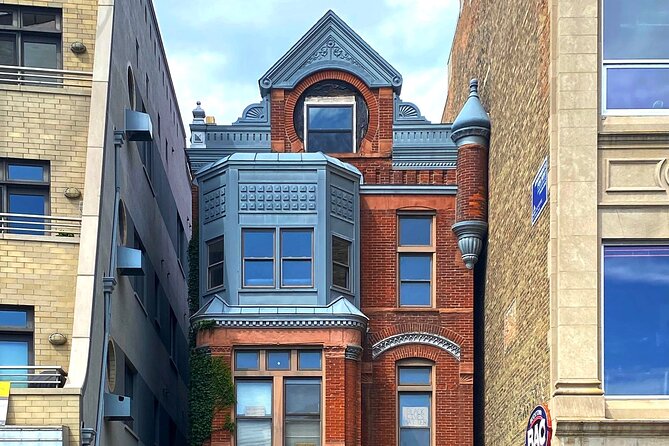
Confirmation is received at the time of booking, and cancellation is free up to 24 hours before the experience. The tour is located near public transportation, and travelers should have moderate physical fitness to participate.
This walking tour through Wicker Park’s historic homes and cottages isn’t wheelchair accessible. However, the experience offers several advantages:
- Historical photos of each stop are provided in a free app, enhancing the sightseeing experience.
- The small group size ensures a personalized and intimate tour.
- Guests can discover the neighborhood’s remarkable architecture and learn about Chicago’s rich history.
Frequently Asked Questions
Is Photography Allowed During the Tour?
Photography is allowed during the tour. Participants can take photos of the historic homes and cottages they explore, though they should be mindful not to disrupt the tour or invade the privacy of any residents.
Can I Bring My Pet on the Tour?
Pets are generally not permitted on walking tours. The tour description does not mention allowing pets, so it’s unlikely that you can bring your pet along. It’s best to leave your pet at home for this walking tour.
What Happens in Case of Inclement Weather?
In case of inclement weather, the tour will proceed as scheduled. Guests are advised to dress appropriately and bring rain gear. The tour will be modified to provide the best possible experience given the weather conditions.
Is There an Option to Extend the Tour Duration?
The tour operator typically does not offer an option to extend the tour duration. However, private tours or custom arrangements may be available upon request, subject to additional fees and guide availability.
Can the Tour Be Customized to My Preferences?
Yes, the tour can be customized to your preferences. Many providers offer private or semi-private tours that allow you to tailor the itinerary, pace, and focus to your interests. Just inquire about customization options when booking.
Recap
The Historic Homes and Cottages of Wicker Park Walking Tour offers a captivating exploration of Chicago’s architectural past.
Visitors explore the rich history of the neighborhood, marveling at charming workers’ cottages and renowned landmarks.
Through this small-group experience, attendees gain insights into the city’s diverse building styles, from Romanesque Revival to Queen Anne, leaving with a deeper appreciation for the evolution of Chicago’s architectural landscape.
More Walking Tours in Chicago
- Walking Tour: Historic Chicago Pubs in River North and the Loop
- Chicagos Midway, Movies, and the 1893 Worlds Fair Walking Tour
- Chicago Black History Highlights Walking Tour
- Chicago Loop Private Walking Tour With a Guide
- Chicago Loop and Millennium Park Scavenger Hunt Walking Tour
- Michigan Avenue Rendezvous Mobile App Self-Guided Walking Tour
More Tours in Chicago
- Chicago Architecture Walking Tour: Incredible Art Deco Interiors
- Chicago Winter Loop Walking Tour With Indoor Stops
- Chicago Foods Tour With the Loop, Skyline, Millennium Park
- Chicago Scavenger Hunt and Highlights Self-Guided Tour
- Chicagos Luxury Minibus City Sightseeing Tour
- Chicago Food Tour With the Magnificent Mile and Millennium Park
More Tour Reviews in Chicago
Not for you? Here's more things to do in Chicago we have recnetly reviewed
- 4 Best Shopping Tours In Chicago
- 14 Best Dining Experiences In Chicago
- 4 Best Lunch Experiences In Chicago
- 2 Best 4 Day Tours In Chicago
- 2 Best Full-Day Tours In Chicago
- 14 Best Dinner Tours In Chicago
- 25 Best Cruises And Boat Tours In Chicago
- 25 Best Food Tours In Chicago
- Chicago Blackhawks Ice Hockey Game Ticket at United Center
- Chicago: The Pink Panther and the Case of the Missing Diamond
- Scavenger Hunt in Chicago by Wacky Walks
- Ride To/From Chicago Midway Airport (MDW)
